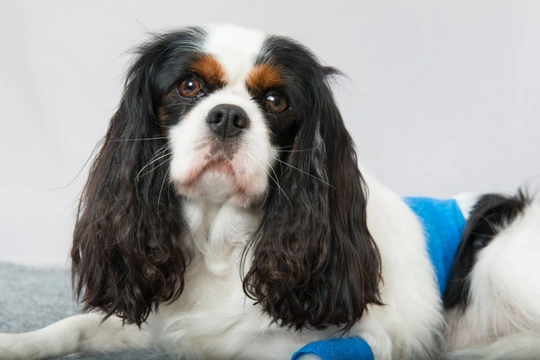
Helping your dog to recover more quickly after surgery
Whether your dog needs to have a routine operation like a spay procedure performed or if they need a rather less common and more serious surgery, such as to correct a torn cruciate ligament or remove a tumour, how the dog is cared for and supported in their recovery after the surgery will have a massive impact upon how quickly they recover, how effective their recovery is, and how happy and comfortable they will be during this time.
While the initial stages of care after surgery will be performed by your vet, a lot of the onus on promoting a healthy recovery falls to you as the dog’s owner once your dog gets home, while following the advice of your vet and calling on them for support when you need to.
Your vet will of course provide you with detailed guidelines on the appropriate care for your dog after their surgery, and what will help or hinder it in the days and weeks following, and this will vary from case to case, depending on what surgery your vet performed and how your dog gets on afterwards.
However, there are several common elements for virtually every surgical recovery that, when managed correctly, can help your dog to heal and recover much faster than if they were left to their own devices.
In this article, we will look at the various factors that in combination, help your dog to recover quickly after surgery. Read on to learn more!
Pain management
The vast majority of surgical procedures will require your dog to take some pain meds afterwards, and these may possibly be needed for several days or even weeks while your dog heals. Reducing pain helps to keep your dog comfortable, and actually helps to speed up healing, even if the pain medications themselves have no direct effect on the wound or injury that was treated.
Added to this, acute pain can actually serve to supress good immune function, which is of course necessary for a wound to heal properly.
The most common post-surgical pain medications prescribed for dogs include non-steroidal anti-inflammatory medications (NSAIDS), or in the case of surgeries that are apt to be acutely painful, opioid analgesics.
Some breeds of dog are particularly sensitive to certain types of anaesthetics and medications, with the Boxer dog being one of these, which may mean that they will need to have medications of a different type.
Limiting movement
Some surgeries require a significant amount of rest and sedentary recuperation as part of their recovery, while others may mean that your dog can and should get up and moving again as soon as possible.
However, for at least a day or two following virtually any type of surgery, your dog’s movement should be limited in order to allow time for the wound to heal, and lessen the risk of the dog inadvertently undoing the effects of the surgery or wound closure.
This may mean that you will need to keep your dog crated or confined, and ensure that they do not get overly excited or run around.
Reintroducing exercise should be done under the advisement of your vet, and undertaken gently and slowly as your dog may be rather weak and possibly, have lost some muscle mass as part of their treatment.
Feeding during recovery
Your vet may well send you home with some special food for your dog, which is designed to be soft, bland and unlikely to upset their stomachs, while also encouraging them to eat normally when they may not be feeling very well. Your vet may also tell you to encourage your dog to eat with either their normal food or some special treats, so whatever your vet advises, follow their advice carefully in order to ensure that your dog gets the food that they need to support their recovery, without causing any additional problems.
Stress
Your dog’s mental state will go a long way towards either helping or hindering their recovery, and obviously, the ideal environment for healing is calm, comfortable, reassuring and stress-free.
Some of the elements of recovery that can be stressful, including the effects of any medications, the pain of the surgery, limitation of movement and the time spent in the clinic cannot be avoided, but there are a whole range of other things that you can have some input into in order to keep things as stress-free for your dog as possible.
Make sure that they are comfortable and relaxed, don’t invite a lot of people round to see your dog, and do what you can to make them able to move around more easily while they recover. Just wearing a buster collar can stress dogs out, and so if they are not bothering their wound, they may be able to have the collar off while they are under direct supervision, which is just one small way that you can help to make your dog more comfortable and happier while they get better.



